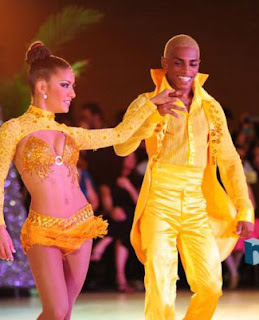Adam, from the fantastic Eyes on Colombia Blog was kind enough to share a post he did with Colombia Travel blog by Marcela's readers, explaining with great detail what a silletero is. So, if you are considering to visit Medellin or to take a Medellin Tour, you might want to save a week to enjoy the beauty of the Feria de las flores that has many things to offer over its 10 days.
So here it is, enjoy Adam's post and remember to take a look at his blog.
Thanks Adam!
-----
The annual Medellín Feria de las Flores (Flower Fair) is almost upon us and so I thought I'd share the story behind an integral part of the fair, the silletero.
The Old Silletero
The silleteros, or seat carriers (a.k.a. cargueros, or carriers) were, around the turn of the 19th century, the only way to be transported or to have something transported over the Colombian mountains. Once the road conditions improved, though, mules began to be used and thus put an end to the need for silleteros.
A famous foreign scientist traveled throughout the region at the time and recounted his experience.
"Since there are those who regularly walk on foot at this altitude and on such difficult paths for 19 or 20 days at a time, they started to carry seats on their backs and charge for the comfort to sit on them, because the mountains of Quindío don't allow for the use of mules. They say in this country "andar en carguero" like one would say "ir a caballo" and those that dedicate themselves to this are not indians, but rather mestizos and sometimes whites...the passage from Quindío isn't the only way one can travel like this here; in the province of Antioquia, surrounded by terrible mountains, there isn't any other way except to go on foot, when permited, otherwise the silletero is needed."
The Modern Silletero
"Silleteros is the term used for the farmers who make beautiful flower arrangements on a silleta (a chair-like contraption for carrying flowers on a person’s back). The silletas are made from wood and have a back plate and two handles for hanging the silleta on a person’s back.
The most emblematic figure of this tradition is the legendary María La Larga, a silletera who carried children on her back. María and her novel way of transportation convinced many of the region’s farmers that silletas were the easiest, fastest way for carrying flowers from the farm to the city.
The use of the word silleta became generalized and since the beginning of the twentieth century, the term silletero began to be applied to the people who sold flowers on Medellín’s cobble-stoned streets. - Colombia Travel
More Info
Flower Fair - Official Site
--
Adam Lee I Editor
http://eyesonbrazil.com
http://eyesoncolombia.com
http://eyesonportuguese.blogspot.com




